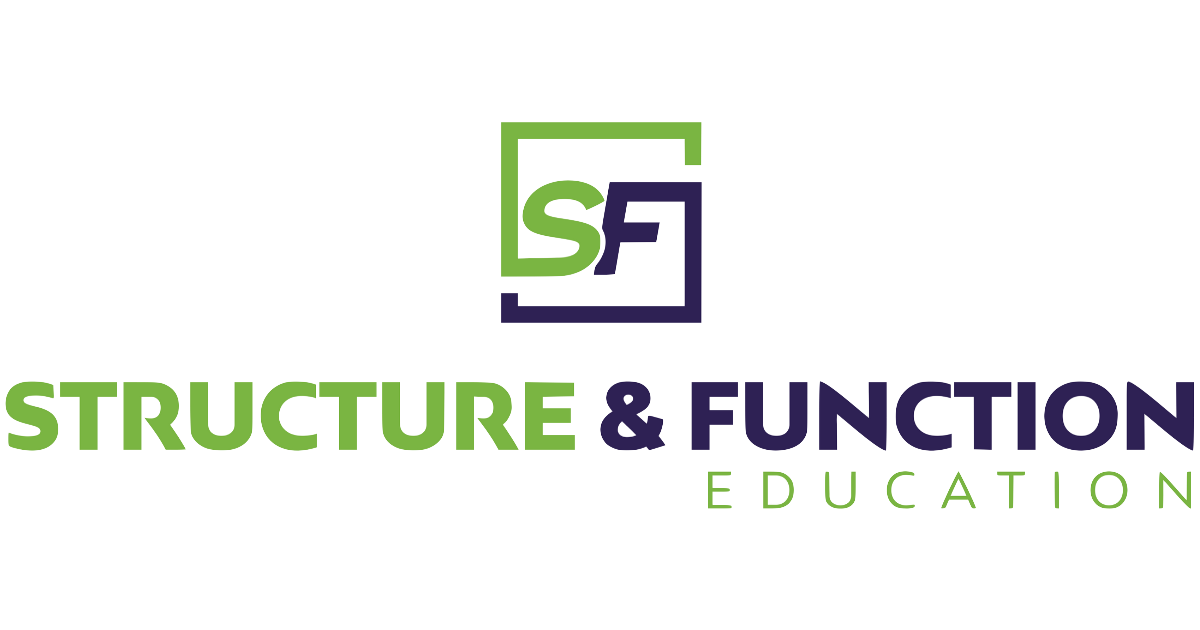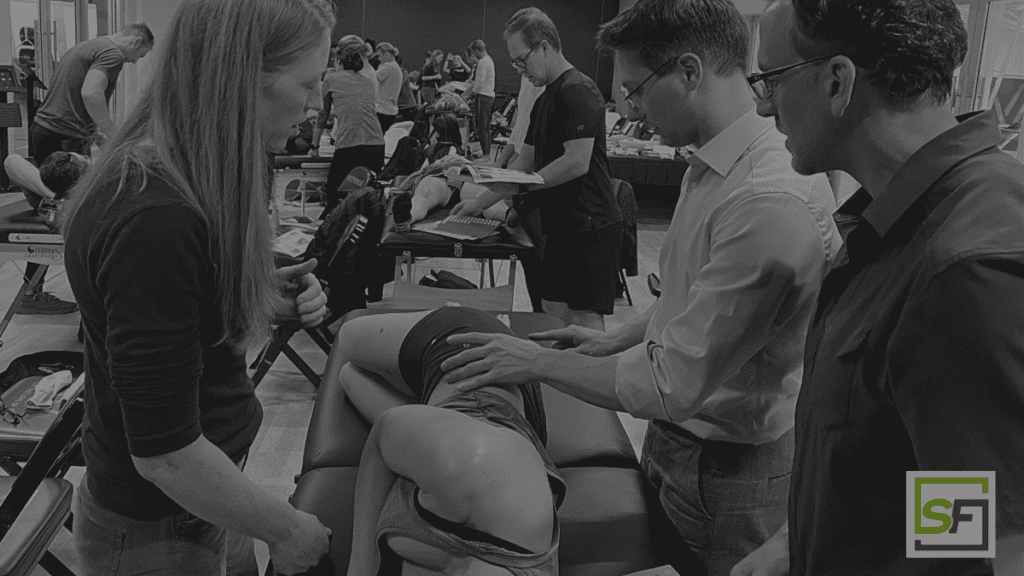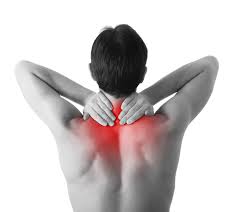This article was sparked by a recent systematic review in an area I have been following for some time, Fascial Manipulation (FM).1 As clinicians, we all are in a never-ending search for treatments that add value to our patients, particularly when it comes to those in pain and struggling with their functional movement. It is important part of our profession to evaluate treatment methods. In this case, evaluating Fascial Manipulation for treating pain and disability.
The Stecco family has been studying fascia and fascial dysfunction for decades and has developed a manual therapy technique to treat fascial dysfunction. 2–4 This FM technique is a manual therapy technique that has been used to treat both acute and chronic conditions, alone or combined with exercise therapy with some exciting results. This review article provides credence to the FM technique and its use for managing pain and dysfunction in musculoskeletal conditions.1
Fascial Research and the Fascial Manipulation Method
The FM method is based on the idea that the fascia is one of the body’s primary unifying elements.4 Their research has focused intensely on the anatomy of the fascia and its importance to musculoskeletal function and movement.4–6 Through the exploration of fascia, the presence and continuity of fascial lines as well as the biomechanical properties of fascia have been described.3,7,8 This exploration has debunked the long-standing idea that fascia is passive or relatively irrelevant to function. In fact, the entire body is connected and enveloped through the fascia, and much of the neural mechanoreceptors are contained in the fascia.9,10 Their intensive investigation has provided new insights into the role fascial plays in many of the painful conditions we treat daily.
One fascinating discovery is that trauma or overuse syndromes can alter the structure and function of the fascia.2 It does this through densification, a process that changes the fascia’s ability to deform and transmit forces appropriately.11,12 This altered fascial stiffness contributes to many of the clinical presentations we see, poor muscular biomechanics, altered muscle coordination, poor movement patterns, and decreased strength and range of motion.4,13–15 This alteration in the fascia has also been linked to myofascial pain.11,14,16,17 The Stecco’s FM method divides the body into 14 segments, with each segment comprising of 6 myofascial units.4 FM targets the dysfunctional fascial plane or line to change tissue structure and optimize its function.2,4,16
Studies of Fascial Manipulation
The literature is emerging for the effectiveness of FM. One of the early articles demonstrated the effectiveness of FM for chronic shoulder pain.16 Since the early explorations of the technique, many more studies have explored the FM technique in various painful musculoskeletal conditions. These studies demonstrated the efficacy of the technique in the upper and lower extremity.16,18–20 Additional evidence can be found for spinal pain and dysfunction.14,21,22 FM has been effective for other conditions such as TMJ pain and function.23 More recent evidence even points to effectiveness when compared to standard physical therapy.21
Systematic Review
This brings us to this review article I first discussed.1 The authors scoured the electronic databases of PubMed, Cochrane, Scopus, ScienceDirect, and Ovid from January 2005 to December 2019. They included all studies that used Stecco’s Fascial Manipulation as an intervention for musculoskeletal conditions. They included randomized control trials (RCT’s) and non-randomized control trials in their review.
They found thirteen studies met the eligibility criteria. Five studies applied the FM technique alone, while two studies added exercise along with FM. They concluded that there was low to moderate quality evidence for FM’s effect in improving pain and disability in subjects with musculoskeletal pain conditions. This is not surprising given the small quantity of evidence and lack of controlled RCTs. Given this result, I was pretty heartened about the future use and continued exploration of this technique. Of course, the authors suggested that further higher-quality studies should be performed, but this emerging evidence shows some promise for FM as a manual therapy technique.
Conclusion
There is now an accumulation of evidence that points to the effectiveness of FM for musculoskeletal conditions. Based upon the recent review article, they state, “fascia has a role in the development of the myofascial pain in musculoskeletal conditions. Addressing the densified fascia accurately would help in the improvement of pain and disability in musculoskeletal conditions.”.1
Structure and Function Education has partnered with the Stecco Institute to provide FM courses here in the United States. If you would like to learn more about FM courses, follow this link to our Overview of the Fascial Manipulation Method.
If you’re interested in Structure & Function’s Fascial Manipulation course offerings you can find information and upcoming class schedules for FM-1 and FM-2.
References
- Arumugam K, Harikesavan K. Effectiveness of fascial manipulation on pain and disability in musculoskeletal conditions. A systematic review. Journal of Bodywork and Movement Therapies. Published online November 2020:S1360859220302205. doi:10.1016/j.jbmt.2020.11.005. https://www.sciencedirect.com/science/article/abs/pii/S1360859220302205
- Stecco C, Day JA. The Fascial Manipulation Technique and Its Biomechanical Model: A Guide to the Human Fascial System. Int J Ther Massage Bodywork. 2010;3(1):38-40. https://www.ncbi.nlm.nih.gov/pmc/articles/PMC3091422/
- Stecco C, Schleip R. A fascia and the fascial system. J Bodyw Mov Ther. 2016;20(1):139-140. doi:10.1016/j.jbmt.2015.11.012. https://pubmed.ncbi.nlm.nih.gov/26891649/
- Stecco C, Stecco A. Fascial manipulation. In: Fascia: The Tensional Network of the Human Body. Elsevier; 2012:335-342. doi:10.1016/B978-0-7020-3425-1.00007-6
- Stecco C, Hammer WI, Vleeming A, De Caro R. Functional Atlas of the Human Fascial System. Churchill Livingstone Elsevier; 2015. https://www.elsevier.com/books/functional-atlas-of-the-human-fascial-system/stecco/978-0-7020-4430-4
- Adstrum S, Hedley G, Schleip R, Stecco C, Yucesoy CA. Defining the fascial system. Journal of Bodywork and Movement Therapies. 2017;21(1):173-177. doi:10.1016/j.jbmt.2016.11.003. https://pubmed.ncbi.nlm.nih.gov/28167173/
- Wilke J, Krause F, Vogt L, Banzer W. What Is Evidence-Based About Myofascial Chains: A Systematic Review. Archives of Physical Medicine and Rehabilitation. 2016;97(3):454-461. doi:10.1016/j.apmr.2015.07.023. https://pubmed.ncbi.nlm.nih.gov/26281953/
- Schleip R. Fascia as an organ of communication. In: Fascia: The Tensional Network of the Human Body. Elsevier; 2012:77-79. doi:10.1016/B978-0-7020-3425-1.00045-3. https://www.ncbi.nlm.nih.gov/pmc/articles/PMC3430462/
- Stecco C, Pirri C, Fede C, et al. Dermatome and fasciatome. Clinical Anatomy. 2019;32(7):896-902. doi:10.1002/ca.23408. https://onlinelibrary.wiley.com/doi/abs/10.1002/ca.23408
- Bianco G. Fascial neuromodulation: an emerging concept linking acupuncture, fasciology, osteopathy and neuroscience. Eur J Transl Myol. 2019;29(3). doi:10.4081/ejtm.2019.8331. https://www.ncbi.nlm.nih.gov/pmc/articles/PMC6767840/
- Pavan PG, Stecco A, Stern R, Stecco C. Painful Connections: Densification Versus Fibrosis of Fascia. Curr Pain Headache Rep. 2014;18(8):441. doi:10.1007/s11916-014-0441-4. https://pubmed.ncbi.nlm.nih.gov/25063495/
- Luomala T, Pihlman M, Heiskanen J, Stecco C. Case study: Could ultrasound and elastography visualized densified areas inside the deep fascia? Journal of Bodywork and Movement Therapies. 2014;18(3):462-468. doi:10.1016/j.jbmt.2013.11.020. https://pubmed.ncbi.nlm.nih.gov/25042323/
- Ajimsha MS, Daniel B, Chithra S. Effectiveness of Myofascial release in the management of chronic low back pain in nursing professionals. Journal of Bodywork and Movement Therapies. 2014;18(2):273-281. doi:10.1016/j.jbmt.2013.05.007. https://pubmed.ncbi.nlm.nih.gov/24725797/
- Branchini M, Lopopolo F, Andreoli E, Loreti I, Marchand AM, Stecco A. Fascial Manipulation® for chronic aspecific low back pain: a single blinded randomized controlled trial. F1000Res. 2016;4. doi:10.12688/f1000research.6890.2. https://www.ncbi.nlm.nih.gov/pmc/articles/PMC4706049/
- Campa-Moran I, Rey-Gudin E, Fernández-Carnero J, et al. Comparison of Dry Needling versus Orthopedic Manual Therapy in Patients with Myofascial Chronic Neck Pain: A Single-Blind, Randomized Pilot Study. Pain Research and Treatment. 2015;2015:1-15. doi:10.1155/2015/327307. https://pubmed.ncbi.nlm.nih.gov/26640708/
- Day JA, Stecco C, Stecco A. Application of Fascial Manipulation© technique in chronic shoulder pain—Anatomical basis and clinical implications. Journal of Bodywork and Movement Therapies. 2009;13(2):128-135. doi:10.1016/j.jbmt.2008.04.044. https://pubmed.ncbi.nlm.nih.gov/19329049/
- Creighton A, Stecco A, Whitelaw A, Probst D, Hunt D. Fascial Manipulation method as a treatment for pain, atrophy and skin depigmentation after pes anserine bursa corticosteroid injection: A case report. J Bodyw Mov Ther. 2020 Oct;24(4):280-285. doi: 10.1016/j.jbmt.2020.06.033. Epub 2020 Jul 30. PMID: 33218523. https://pubmed.ncbi.nlm.nih.gov/33218523/
- Brandolini S, Lugaresi G, Santagata A, Ermolao A, Zaccaria M, Marchand AM, Stecco A. Sport injury prevention in individuals with chronic ankle instability: Fascial Manipulation® versus control group: A randomized controlled trial. J Bodyw Mov Ther. 2019 Apr;23(2):316-323. doi: 10.1016/j.jbmt.2019.01.001. Epub 2019 Jan 23. PMID: 31103114. https://pubmed.ncbi.nlm.nih.gov/31103114/
- Busato M, Quagliati C, Magri L, et al. Fascial Manipulation Associated With Standard Care Compared to Only Standard Postsurgical Care for Total Hip Arthroplasty: A Randomized Controlled Trial. PM&R. 2016;8(12):1142-1150. doi:10.1016/j.pmrj.2016.04.007. https://pubmed.ncbi.nlm.nih.gov/27210234/
- Rajasekar S, Marchand AM. Fascial Manipulation ® for persistent knee pain following ACL and meniscus repair. Journal of Bodywork and Movement Therapies. 2017;21(2):452-458. doi:10.1016/j.jbmt.2016.08.014. https://pubmed.ncbi.nlm.nih.gov/28532890/
- Harper B, Steinbeck L, Aron A. Fascial manipulation vs. standard physical therapy practice for low back pain diagnoses: A pragmatic study. Journal of Bodywork and Movement Therapies. 2019;23(1):115-121. doi:10.1016/j.jbmt.2018.10.007. https://pubmed.ncbi.nlm.nih.gov/30691738/
- Stecco A, Meneghini A, Stern R, Stecco C, Imamura M. Ultrasonography in myofascial neck pain: randomized clinical trial for diagnosis and follow-up. Surg Radiol Anat. 2014;36(3):243-253. doi:10.1007/s00276-013-1185-2. https://pubmed.ncbi.nlm.nih.gov/23975091/
- Guarda-Nardini L, Stecco A, Stecco C, Masiero S, Manfredini D. Myofascial Pain of the Jaw Muscles: Comparison of Short-Term Effectiveness of Botulinum Toxin Injections and Fascial Manipulation Technique. CRANIO®. 2012;30(2):95-102. doi:10.1179/crn.2012.014. https://pubmed.ncbi.nlm.nih.gov/22606852/




